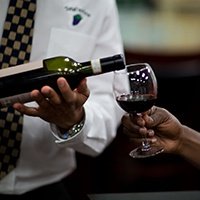Fortified wines were created centuries ago to ensure the quality of exported wines. Merchants discovered that adding more alcohol to wine helped preserve the wines as they bounced their way around the world in wagons and boats. Today, of course, fortified wines born of necessity are a wonderful luxury, delightful to sip as apertifs or with dessert or a fine cigar.
How are fortified wines made? Grape spirits – brandy, essentially – are added to wine while it’s still fermenting, in the process of converting grape sugars to alcohol. The spirits quickly halt fermentation. The earlier the spirits are added, the sweeter the resulting wine will be, with less of the sugar converted to alcohol. For drier fortified wines, the spirits are added later in the fermentation, after much of the wine’s sugars have already been fermented dry, or converted to alcohol. The grapes used, the point at which spirits are added and how the fortified wine is aged all determine the ultimate style of the wine.
The best known examples of fortified wines are the great Ports and Sherries of Portugal and Spain, respectively. Others are the red and white Vin Doux Naturels of southern France, such as Muscat de Beaumes de Venise and Muscat de Saint-Jean de Minervois.
Sweet fortified white wines are excellent on their own or paired with desserts like crème brulee or fruit tarts. Sweet Ports and other fortified wines made with red grapes match well with dark fruit desserts, chocolate and rich blue cheeses.


